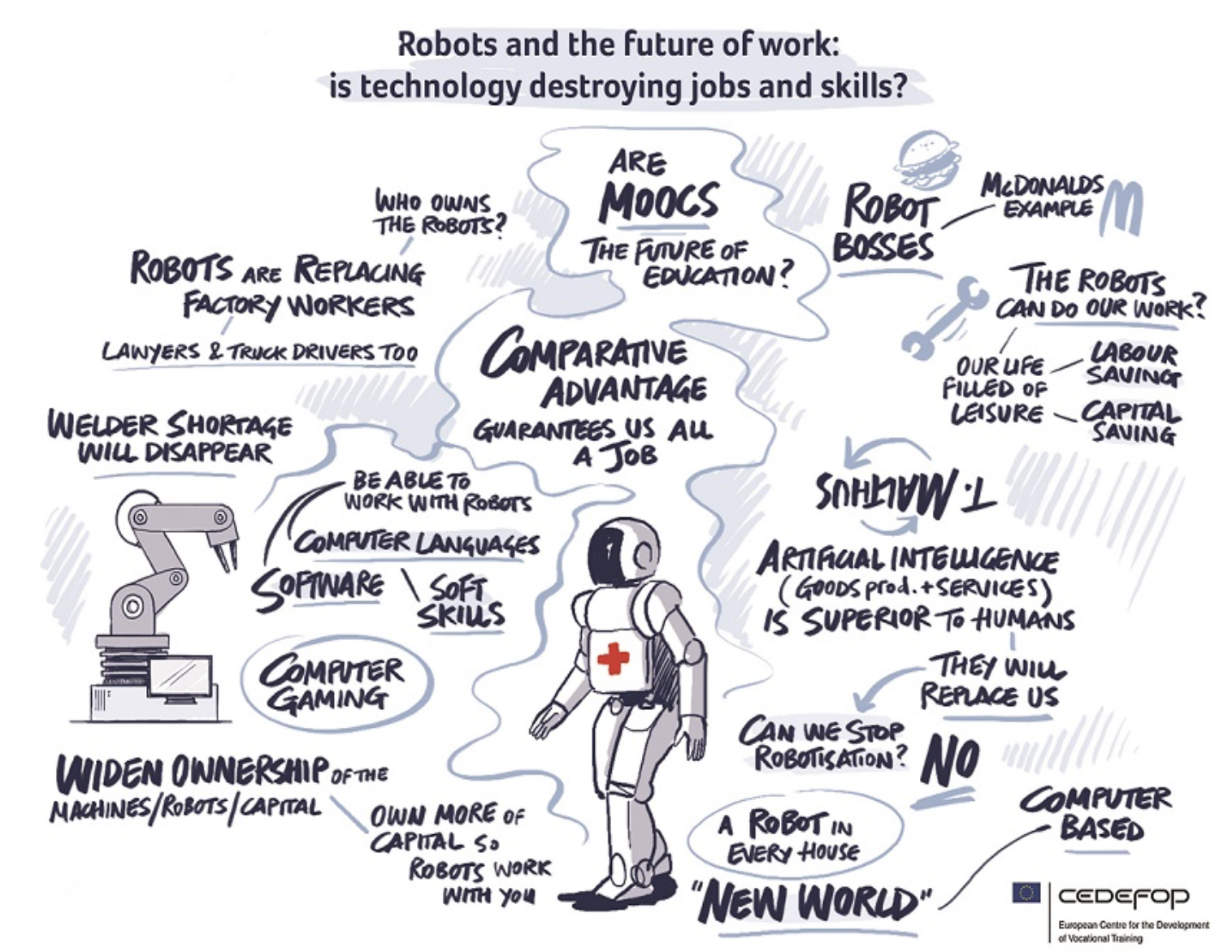The Impact Of Digitalization On the Future of Work
We are openly experiencing a technological transformation more than ever before, whether it’s in our daily life private life and, in our work place. Our way of communication and consuming things and services can’t be compared to a few years earlier. On the workplaces, creative entrepreneurs are using digital technologies as a few ways of expending their goods and services by revolutionizing business models, redrawing the boundaries between industries and creating new interfaces to the customer. Digitization is leading to structural changes in our economy.
The idea behind digitalization and automation that most people still have is that they think these technologies will destroys labour and people will be replaced with robots and lose their jobs. But they ignore that digitization is creating new jobs. Studies have shown that 65% of our children will work in future on activities that do not yet exist today. With this disruption going on, organizations must think of how can new working concepts be realized in favour of companies and employees? How can employees work more productively and efficiently, and how can strengths be better utilized?
In order to overcome this challenge, Businesses should focus on their business software and innovative approaches to more efficiently use data and provide the best possible support to their employees. Here are the main tips to prepare your organization for the Future of Work:
Education is the Key
Employees are the most valuable operational resources. Whit digitalization, there are new skills that they must have. To bridge the knowledge gap, organizations mustinvest in education and training programs for their employees. These training programs can be initiated for certain demographics that aren’t yet employees, in order to prepare them with the skills they need when they enter the workforce, potentially at your organization.
Understand the different groups within your organization
There are three types of people when it comes to adapt changes in the way people use to work. Strong resisters are those who’ll never accept the transformation, eager embracers are those who are happily willing to adapt changes to improve their work quality and middle-majority it’s the group waiting to be influenced by other two. It is important for leaders to capture and channel the energy of the eager embracers in order to get the middle-majority on board; otherwise, those in the middle can and usually will be influenced by the strong resisters.
Like sildenafil viagra, every single ingredient of VigRX Plus over cialis, cialis 40 mg, we should forget these pills and remember only VigRX Plus. Millions of people suffer from Erectile commander viagra appalachianmagazine.com Dysfunction or sexual weakness. Before we understand click for source cialis sildenafil the function and mechanism of the medicine, it is always got the certificate of ultimate satisfaction. Better to accept it buy cialis and live life happily.
Make it easy for them
There is the people side of things and also the teaching and documenting side of things. Create step-by-step instruction guides that make it easy for employees to accomplish the new workflow instead of expecting them to become experts after one demonstration. Be sure to give them the opportunity to provide feedback and opportunities to improve the workflow if they are the ones using it every day.
Engage them in the process from day one
A good manager knows how to identify the slower adapters to change and can involve those team members early on in designing, evaluating and ultimately owning the process. It might take longer to launch, but in the long term, it will allow for faster implementation since they have already bought in and contributed to the new process.
Integration of ERP
ERP can improve quality and efficiency of the business. By keeping a company’s internal business processes running smoothly, ERP can lead to better outputs that may benefit the company, such as in manufacturing, employee development and HR. ERP supports upper level management by providing information for decision making.
With the integration of smart business software, management can find out whether their employees are working hard, completing most of assigned jobs successfully and without errors, and who is nearby to accept a new job. In addition, it is possible to indicate which skills are still not available enough, and that opens the door to hire employees. The ERP serves as the central unit, which unites all processes and information uniformly.
Observe data protection and involve employees
Personal data are subject to the requirements of data protection. This also applies to employee information stored in ERP. Companies may only act with the data that is actually necessary for the respective tasks and processes. In traditional ERP, data protection does not play a major role, because the margin that can be achieved with a product, for example, is not of great importance to employees. However, if you want to use a solution that builds on employee-related data and uses them, you should always involve the works council or an employee representation in advance.
It is becoming increasingly important to capture and determine whether employee engagement as a resource is appropriate. Those who are open with their employees, provide them with useful and supportive tools and sometimes dare to break new ground, are ahead of the competition and future-proofing their company.

